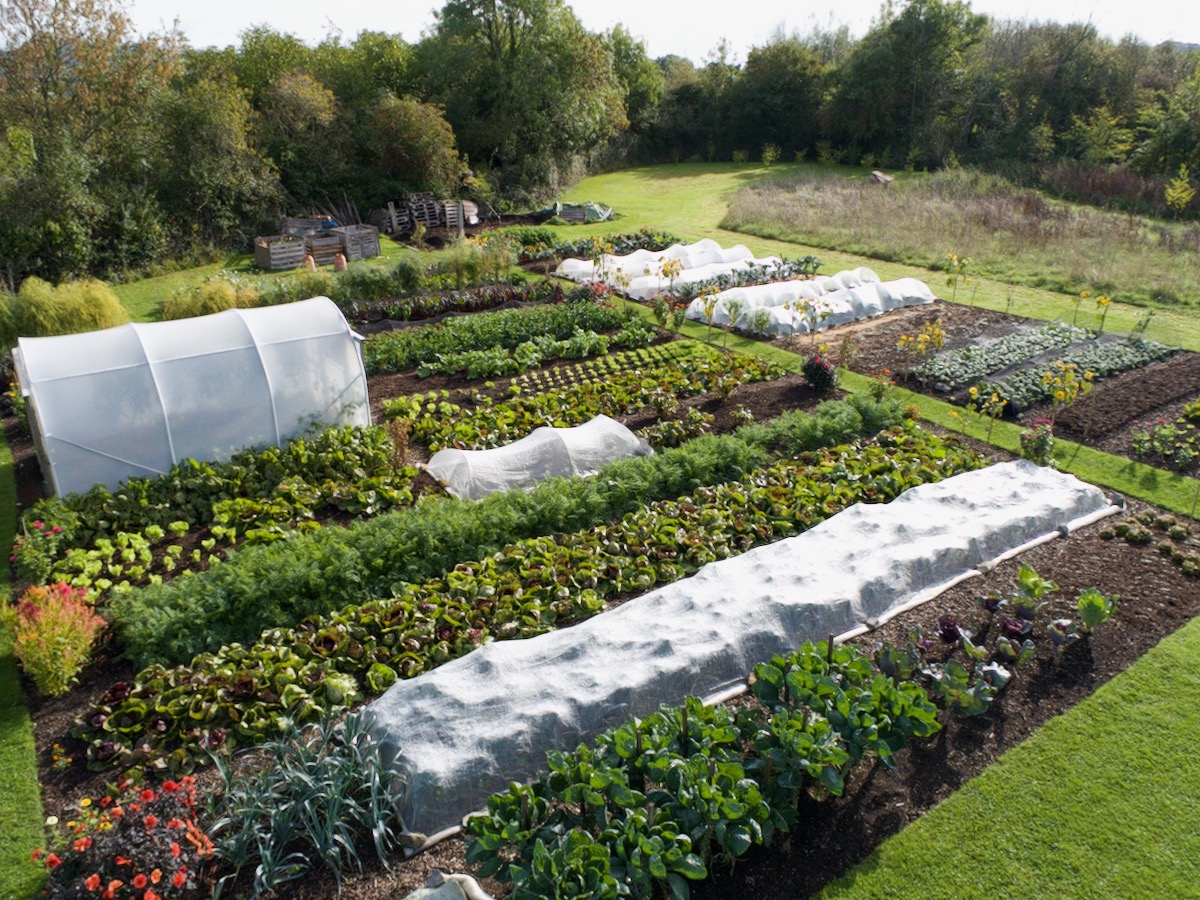Negotiate the big tipping point
Heading

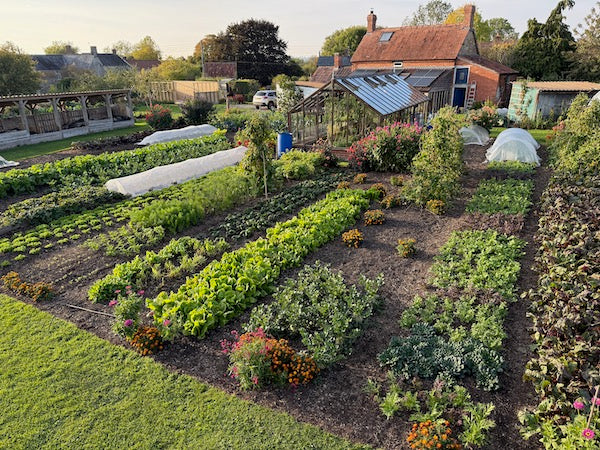
Even now in the middle of October, the garden is full of beautiful vegetables. We have a lot of work ahead to harvest, for my various outlets.
However, we're just about to enter the winter half, and 25th October is a tipping point I've often noticed. The sun is present for less than 10 hours and new growth is much weaker and slower.
The diminished light level affects us as well and I start to take vitamin D at this time.
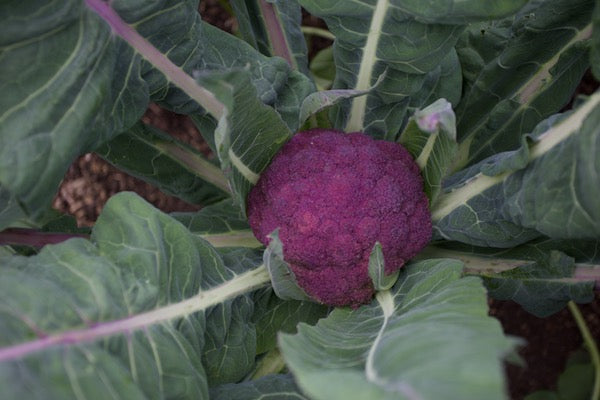
New growth is now slow, but plants continue to mature, converting their resources into harvests we desire. This cauliflower, Purple of Sicily, went in the ground after beetroot on 15th July, and three months later the plants are giving a nice flow of harvests like this.
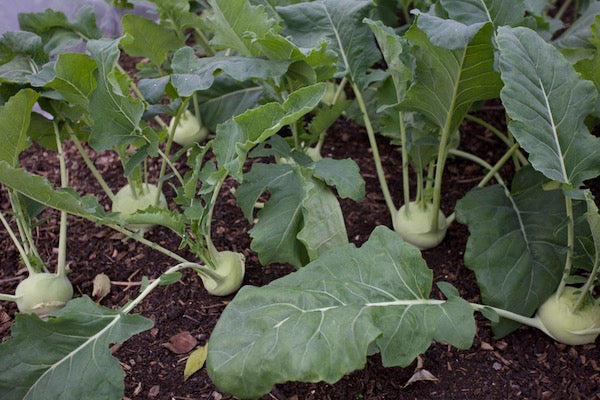
Likewise these kohlrabi Noriko F1, were transplanted 13th August from sowing mid-July. I chose that sowing time because there is no chance in autumn of kohlrabi trying to flower and become woody, so they just continue to swell. Initially they spent six weeks under fine mesh to protect them from flea beetles.
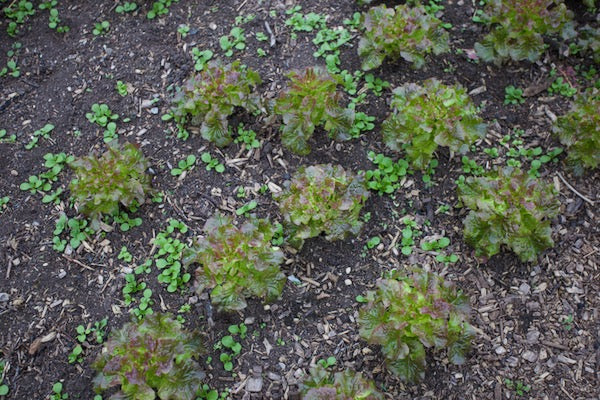
One vegetable that thrives through winter is lambs lettuce / corn salad. I sowed these between lettuce on 7th September, just before a thunderstorm which I could see developing. That saved time because I simply scattered the seed on top, and the rain washed it in for successful germination.
We have continued to pick leaves of the Maravilla lettuce, and soon they will finish and can be twisted out.That allows the corn salad to give harvests from December. There are many ideas like this in my new book, Growing Together, published next March by Dorling Kindersley.
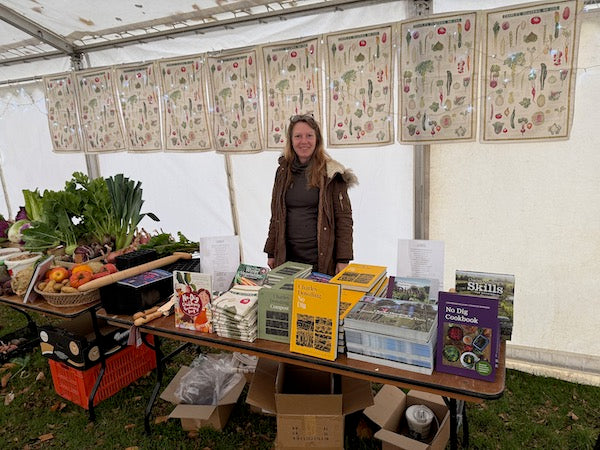
Fresh food in the dark months
It's vital in the second half of a year to time your sowings carefully, in order to have beautiful harvests such as you see above, and in this recent video. This was my stall at Wells food festival recently, with a friend Heidi. My tea towels made a lovely backdrop.
We sold plenty of my Calendar of Sowing Dates, which you can also buy in Waterstones and on Amazon. Almost as popular were the Children's No Dig Gardening book, and the No Dig Cookbook.
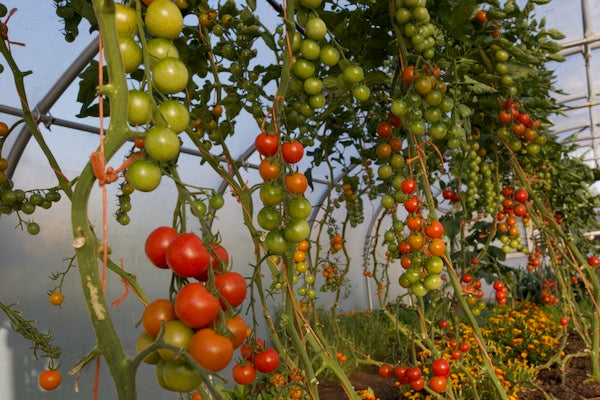
For learning how to improve soil, we sold many Compost and No Dig books as well. I explain in those books how you can grow tomatoes like this and the photo is 21st September.
I had a question about this on my TikTok account:
"How do you make the plants bear fruits like that after months of cropping? Mine start to get smaller in size despite an increase in nutrients added. I’m using hydroponic methods."
I replied that their comment shows the limits of hydroponic growing, compared to the success of growing in undisturbed soil, where plants can continue to find food throughout a growing season, exactly as these late tomatoes demonstrate. It’s about more than nutrients, it’s about enzymes and fungal filaments, and bacterial enablers in the soil, helping plants to grow. It's difficult if not impossible to get that life into a chemical solution.
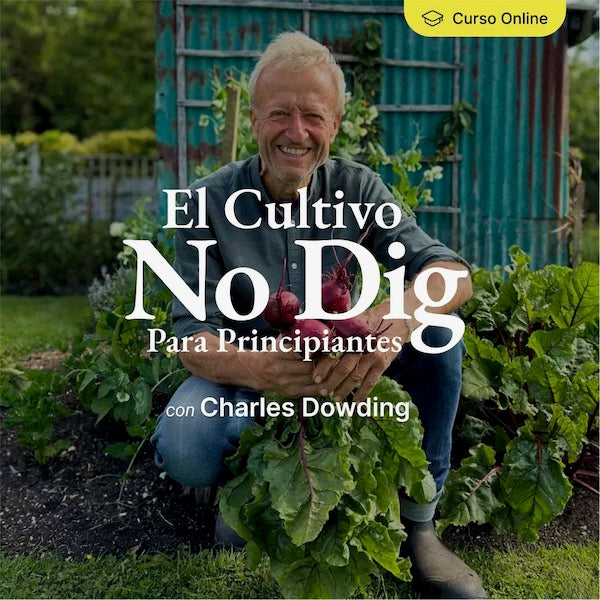
Learn no dig in Spanish
For Spanish speakers, we have just translated the contents of the No Dig online course into your language. That includes subtitles for the videos. This is what you have access to after purchase:
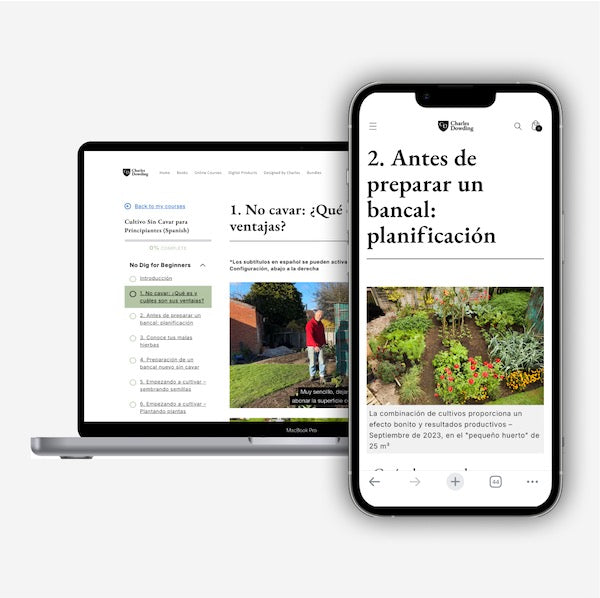
Green manures
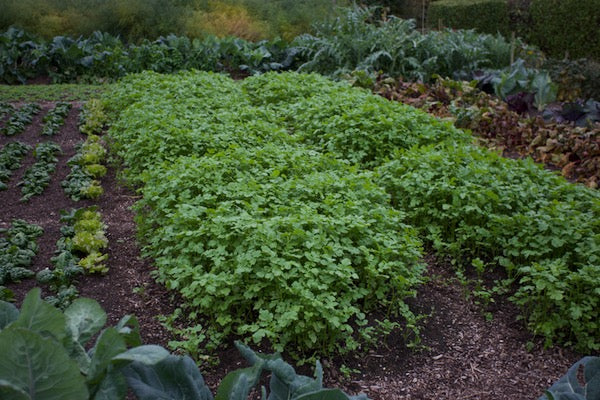
Above is mustard Sinapis alba ('white mustard'), sown 7th September before that thunderstorm, after clearing the squash harvest. For no dig it's the best green manure - fast to grow and killed by frost. Healthy no dig soil means no worries about it being a brassica.
In contrast, I see many recommendations to sow green manure plants which are much more difficult to eradicate next spring. Such as clover, trefoil and rye grass. This can really interfere with spring sowings and plantings. Plus by early spring, the leafy covers increase slug populations. This is based on my observations of trying them.
It's almost too late now to sow mustard, and a similar option is phacelia. Only in climates with mild winters, would I sow them now, and as soon as possible. Even sow mustard over the top of new garlic plantings.

Mustard will be sown in this compost, after Adam had planted garlic in the dibbed holes, September 30th 2023.
You can still plant garlic, and broad beans, any time until December. A good period in 2025, based on moon phases, is 1st to 3rd November, just before the full moon on 5th November.
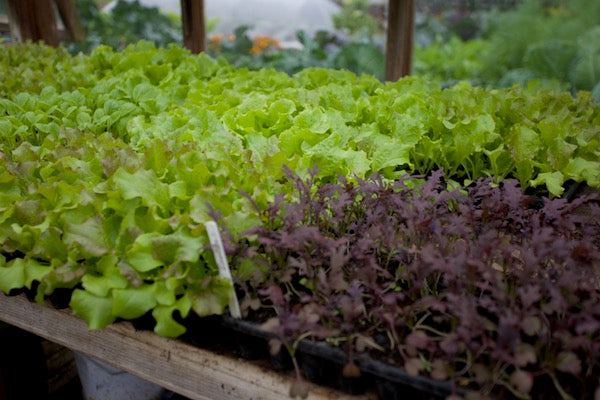
Above are salad plants for winter, going into the polytunnel (below) and greenhouse during the next two days, mid-October. They were sown between 10th and 20th September, in a potting mix of worm compost, in the small cells of my CD module trays. I have not fed them and never do that.
I'm afraid it's too late to sow them now unless you can wait until March for first harvest. The plants above will start cropping late November, and continue until April.
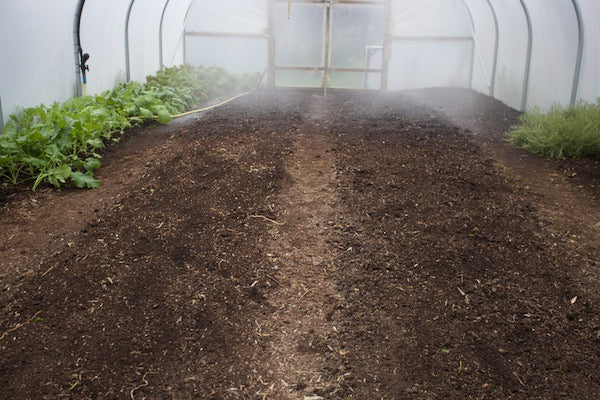
After clearing tomatoes, aubergines, basil, marigolds, and other summer plantings, the ground is dry. Especially after tomatoes, which I had not watered for one month. The spray line is a good way to re-wet soil, which takes a while to soak up new water and become fully moist, before planting.
No Dig Day 3rd November
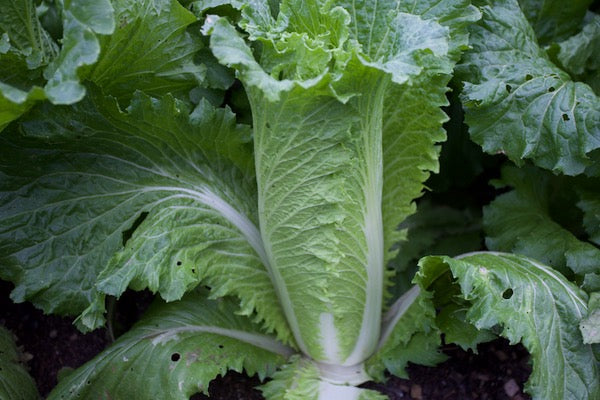
Soon we shall announce a competition for children, and for anybody about choosing a photo caption.
We shall celebrate the day with a video, followed by lunch here for the team. It's a chance to do anything you feel like which will offer inspiration to others about this beautiful gardening method.
For example, the Granat Chinese cabbage above. It's not an easy vegetable to grow, and yet it was transplanted very recently on 18th August, so has achieved all that growth in just eight weeks, with no new compost since the previous December. Also, there have been very few weeds.
For more on no dig, and how I started 40+ years ago, have a listen to my recent interview by Karen Anderson, on her podcast The Sieve.
Get Charles's advice in his free newsletter
& 10% off your first order in our shop



